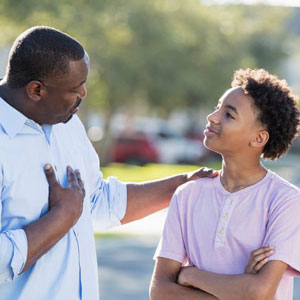How to Handle a Broken Bone
en español: Primeros auxilios: Huesos rotos
Medically reviewed by: Melanie L. Pitone, MD
Broken bones (or fractures) are a common injury in kids. They often happen after a fall. All broken bones need medical care, no matter how minor they seem.
What Are the Signs & Symptoms of a Broken Bone?
Your child may have a broken bone if:
- You heard a "snap" or a grinding noise during an injury.
- There's swelling, bruising, or tenderness.
- The injured part is hard to move or hurts when moving, being touched, or bearing weight.
- There is a deformity — this means that the body part looks crooked or different than it did before the injury.
What Should I Do if My Child Might Have a Broken Bone?
- Try not to move the injured arm or leg.
- Gently take clothing off the injured area. If this is very painful for your child, use scissors to cut off the clothing.
- Keep the injured limb in the position you find it.
- Put a simple splint on the broken area if you have one. A splint holds the bone still. This protects it until the child is seen by the doctor. To make a splint, you can use a small board, cardboard, or folded up newspapers. Wrap it with an elastic bandage or tape.
- Get medical care.
- Don't let your child eat or drink in case they need surgery.
When Should I Call 911 for a Broken Bone?
Do not move your child and call 911 right away if:
- You suspect a serious injury to the head, neck, or back.
- A broken bone comes through the skin. While you wait for help:
- Keep your child lying down.
- Do not wash the wound or push in any part that's sticking out.
What Can Help Prevent Broken Bones?
Not every fracture can be prevented. But to make them less likely:
- Help kids build strong bones by making sure they get enough calcium, vitamin D, and physical activity.
- Have kids and teens wear a helmet and safety equipment like wrist guards and knee pads when riding a bicycle, tricycle, skateboard, scooter, or any type of skates and roller blades.
- Remind young athletes to use the needed safety equipment for their sport.
- Use safety gates at bedroom doors and at both the top and bottom of stairs (for babies or toddlers).
- Do not use infant walkers.
Medically reviewed by: Melanie L. Pitone, MD
Date reviewed: July 2022


